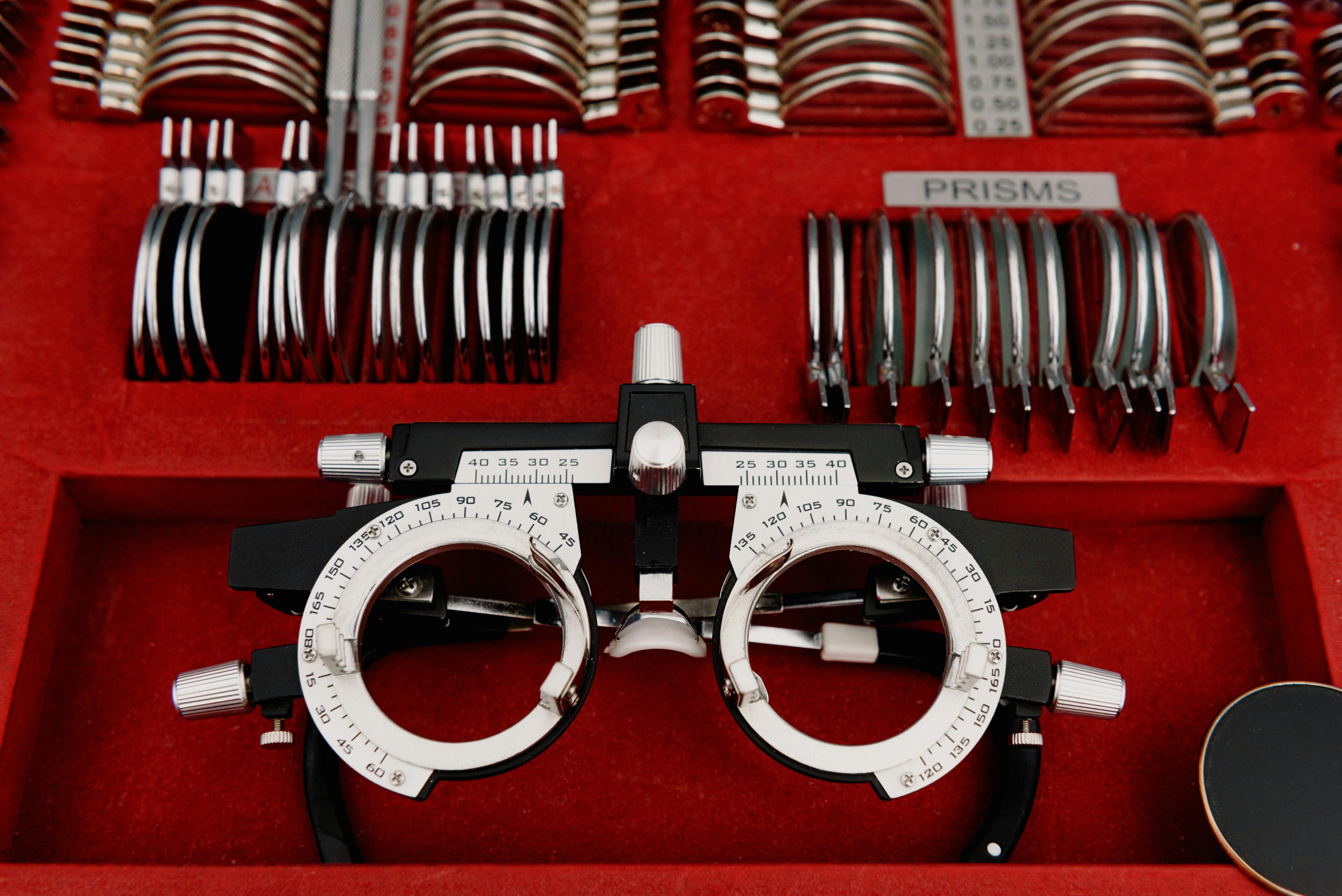
Exploring the World of Pre-Employment Testing: Unveiling the Benefits and Pros & Cons
Pre-employment testing plays a significant role in the modern recruitment process, as employers strive to make informed decisions about potential hires. It serves as a powerful tool to assess candidates and discover crucial insights about their skills, abilities, and compatibility with the job requirements. In this comprehensive overview, we dive into the purpose of pre-employment testing and explore its various facets.
Determining Job Fit:
Employers utilize pre-employment testing methods to evaluate if candidates have the necessary qualifications and competencies for a specific role. These tests can range from personality assessments to cognitive ability evaluations, providing valuable data to establish job fit. By aligning candidate profiles with job demands, employers can enhance their hiring accuracy and identify individuals who will excel in the position.
Predicting Performance Potential:
A core objective of pre-employment testing is to predict an individual's potential job performance. These evaluations are designed to assess specific skills needed for success in a particular role. For instance, coding tests for software developers or customer service simulations for representatives might be used. The results enable employers to make educated predictions regarding how well a candidate is likely to perform in real-world scenarios.
Identifying Skill Gaps:
Thorough pre-employment tests assist employers in identifying any skill gaps existing within potential hires. By administering evaluations aligned with role requirements, organizations can instantly pinpoint areas where candidates may lack necessary proficiencies. This allows employers to formulate targeted training and development programs or provide additional resources as needed to bridge those gaps effectively.
Minimizing Bias and Promoting Diversity:
Pre-employment testing contributes positively towards reducing bias in the hiring process. Using standardized assessments ensures that all candidates undergo an unbiased evaluation based on observable skills and abilities rather than superficial factors such as gender, ethnicity, or appearance. This commitment to fairness promotes diversity and inclusion within organizations, opening doors for encouraging talent from all backgrounds.
Increasing Efficiency and Streamlining Screening:
Efficiency gains are yet another vital aspect of pre-employment testing. By systematically narrowing down the candidate pool, it saves employers both time and resources. Instead of manually reviewing numerous resumes or conducting countless interviews, assessments can be employed to filter out candidates who don't meet the desired criteria quickly. This ultimately streamlines the screening process, allowing employers to focus on the best-suited candidates efficiently.
Identifying Cultural Fit:
Beyond technical competencies, pre-employment testing can be invaluable for assessing cultural fit between candidates and organizations. Evaluations can gauge individual values, work preferences, communication styles, adaptability, and team dynamics. Identifying applicants who align with an organization's values and cultural norms helps create a cohesive and productive work environment.
Improving Retention Rates:
By utilizing pre-employment testing to delve deeper into candidates' profiles, employers can improve retention rates. Finding individuals who genuinely align with the job requirements and company culture increases employee satisfaction and reduces turnover rate. Comprehensive screening paints a clearer picture of candidate compatibility, leading to longer-lasting employment relationships.
Final Thoughts:
Efficiently unraveling the purpose of pre-employment testing allows organizations to make confident hiring decisions backed by relevant data. From determining job fit to predicting performance potential, minimizing bias, and improving retention rates, this tool has proven its value in numerous organizations across various industries. By embracing comprehensive pre-employment testing strategies, companies can enhance their overall recruitment efficiency while making well-informed choices that set them up for long-term success.
 The Various Types of Pre-Employment Tests and What They MeasurePre-employment tests are assessments administered to job applicants prior to hiring them. These tests aim to gather information about a candidate's skills, knowledge, personality traits, cognitive abilities, and overall suitability for the position. There are several types of pre-employment tests that organizations use to evaluate candidates. Let's take a closer look at some of the most common ones and what each test measures.
The Various Types of Pre-Employment Tests and What They MeasurePre-employment tests are assessments administered to job applicants prior to hiring them. These tests aim to gather information about a candidate's skills, knowledge, personality traits, cognitive abilities, and overall suitability for the position. There are several types of pre-employment tests that organizations use to evaluate candidates. Let's take a closer look at some of the most common ones and what each test measures.1. Cognitive Ability Tests: These assessments measure a candidate's mental abilities, including logical reasoning, problem-solving skills, numerical and verbal aptitude, spatial awareness, and perceptual ability. Cognitive ability tests provide insights into an individual's intellectual potential and capacity to handle complex tasks.
2. Personality Assessments: These evaluations focus on understanding a candidate's personality traits and how they may fit into the company culture. These tests typically assess qualities like extroversion, agreeableness, conscientiousness, emotional stability, and openness. Personality assessments help employers predict how well an individual may perform in specific workplace scenarios or adapt to certain work environments.
3. Aptitude Tests: Aptitude tests aim to determine an applicant's specific aptitudes or talents relevant to a particular field or job role. These tests can measure various skills such as mechanical reasoning, technical knowledge, attention to detail, critical thinking ability, customer service orientation, or sales-oriented skills. Aptitude tests provide employers with insights into a candidate's potential to excel in a specific job.
4. Skills-based Tests: These assessments evaluate a candidate on their job-specific skills required for the position they have applied for. For instance, if someone is applying for a programming role, they may be required to complete coding exercises or demonstrate proficiency in certain programming languages during the test. Skills-based tests can also cover areas such as writing ability, data analysis proficiency, or foreign language skills.
5. Emotional Intelligence (EQ) Tests: EQ tests gauge a candidate's ability to perceive emotions (both their own and others'), understand and manage emotions effectively, express empathy, and establish positive relationships. These tests help assess one's emotional awareness, self-regulation, social skills, motivation, and empathy levels.
6. Integrity Tests: Integrity tests evaluate a candidate's personal and work ethics, attitudes towards theft, dishonesty, or substance abuse, and their overall trustworthiness. Employers use these tests to determine if an individual is likely to engage in unethical behaviors or violate company policies.
7. Situational Judgment Tests: These scenarios-based assessments present candidates with job-related dilemmas or situations to assess their decision-making abilities and problem-solving skills in real-life contexts. Situational judgment tests seek to identify how well a candidate can analyze complex situations, apply logical reasoning, and make informed choices within a workplace environment.
Each of these pre-employment tests aims to provide employers with valuable insights into a candidate's suitability for the role they are applying for. By utilizing these assessments during the hiring process, organizations can make more informed decisions when selecting the most qualified individuals for a particular job vacancy or placement.
 The Science Behind Personality and Aptitude Tests in RecruitmentPersonality and aptitude tests are two commonly used assessments in recruitment processes, aimed at identifying the best fit between candidates and job requirements. These tests have gained significant importance due to their ability to provide valuable insights into individual characteristics, helping employers make informed hiring decisions.
The Science Behind Personality and Aptitude Tests in RecruitmentPersonality and aptitude tests are two commonly used assessments in recruitment processes, aimed at identifying the best fit between candidates and job requirements. These tests have gained significant importance due to their ability to provide valuable insights into individual characteristics, helping employers make informed hiring decisions.The science behind personality tests revolves around examining different traits and characteristics of an individual. These tests are designed based on extensive research in psychology and behavioral science. By using established frameworks like the Big Five Personality Model, assessors can measure personality dimensions such as extraversion, agreeableness, conscientiousness, emotional stability, and openness to experience.
Companies implement personality tests during recruitment to obtain a comprehensive understanding of a candidate's temperament and behavioral tendencies. Results help employers determine whether an applicant possess qualities that align with the demands of a specific position or organizational culture.
Besides personality, aptitude tests play a crucial role in recruitment as they evaluate an individual's natural abilities and potential for certain types of tasks or roles. These assessments have a scientific basis that identifies inherent aptitudes related to cognitive abilities (e.g., verbal reasoning, numerical skills) and specific domains (e.g., problem-solving or critical thinking ability).
One key advantage of incorporating aptitude assessments is their capacity to assess candidates objectively, avoiding interview bias. Additionally, aptitude tests are valuable for predicting an individual's potential performance even if they lack experience in a particular field.
Using standardized procedures and statistical analysis, these tests can compare an applicant's scores against normative data to provide a quantitative ranking or eligibility rating. This information assists recruiters in making effective comparisons among applicants and offers a fairer evaluation process overall.
It is worth mentioning that while personality and aptitude tests are powerful tools for recruiters, they should be used alongside other assessment methods like interviews and references to ensure holistic decision-making. No single test can capture the full scope of an applicant's capabilities and qualities—not all aspects can be conveniently quantified through standardized tests.
To maximize the validity and reliability of these tests, it is crucial for organizations to collaborate with experts and test providers specializing in psychometric assessments. Certified professionals can ensure the appropriate selection and utilization of suitable tests for specific recruitment purposes.
However, it is also important to be cautious with such assessments to prevent misunderstandings or unjust practices. Tests should be properly validated, fair, transparent, and relevant to the job being advertised, adhering to ethical guidelines set forth by professional associations.
In conclusion, personality and aptitude tests form a vital part of effective recruitment processes. By understanding their scientific grounding and utilizing them appropriately within a broader assessment framework, organizations can enhance their ability to identify the best applicants who possess the necessary attributes and potential for success within their roles.
 Diving Deep into Skills Assessment: How It Shapes the Workforce of Tomorrowtest. In today's rapidly changing job market, the significance of skills assessment cannot be overstated. With technological advancements, the digitalization of workplaces, and evolving job requirements, it is crucial for organizations to comprehend the skills of their workforce extensively. This depth in skill assessment aids in shaping the workforce of tomorrow.
Diving Deep into Skills Assessment: How It Shapes the Workforce of Tomorrowtest. In today's rapidly changing job market, the significance of skills assessment cannot be overstated. With technological advancements, the digitalization of workplaces, and evolving job requirements, it is crucial for organizations to comprehend the skills of their workforce extensively. This depth in skill assessment aids in shaping the workforce of tomorrow.Assessing skills goes beyond assessing educational qualifications and experiences stated on a resume. It involves evaluating an individual's proficiency in a wide array of competencies that are relevant to their role. Skills assessment determines the skill gap, identifies areas of improvement, and enables employers to make informed decisions about workforce development and recruitment.
One way to dive deep into skills assessment is through competency-based evaluations. These evaluations outline specific skills required for a particular job and assess candidates accordingly. By focusing on functional skills and practical knowledge, employers gain greater insight into a candidate's capabilities to perform job-specific tasks effectively.
Furthermore, specialized assessments are used to evaluate technical skills in fields such as programming, computer science, data analysis, graphic design, etc. By examining performance in these niche areas, organizations can ascertain whether a candidate possesses the necessary expertise for success in roles critical for the future.
Another aspect of diving deep into skills assessment is through behavioral assessments. Understanding how an individual functions within a team environment, handles stress or conflict, and communicates with others aids in evaluating their overall suitability for various roles. Skills like leadership, adaptability, and problem-solving can often be uncovered through behavioral assessments.
To shape the workforce of tomorrow effectively using skills assessment, organizations need to focus on continuous learning and development opportunities. By utilizing frequent exercise-based assessments or mock projects relevant to employees' roles, individuals are given avenues to enhance their existing skills continuously. This type of ongoing training prevents skill stagnation and ensures employees remain adaptive and up-to-date in today's dynamic work landscape.
Moreover, harnessing technology is crucial in modern skill assessment practices. Utilizing advanced tools and platforms enables organizations to efficiently collect and analyze data related to skills assessments. These technological solutions also provide personalized feedback and create customized learning paths for individual employees, enhancing the effectiveness of skills development initiatives.
In conclusion, diving deep into skills assessment is an indispensable means of shaping the future workforce. Employers must look beyond traditional qualifications and dig deeper into assessing a candidate's competencies, technical expertise, and behavioral attributes. By providing continual learning opportunities and leveraging technology for effective evaluation, organizations can equip their workforce with the skills necessary to thrive in tomorrow's jobs.
 The Emotional Intelligence Quotient in Employment Screening: Going Beyond the ResumeThe Emotional Intelligence Quotient (EI) is a concept that goes beyond the traditional methods of evaluating candidates based solely on their resume during employment screening processes. It focuses on a person's ability to understand and manage their emotions, as well as effectively recognize and interpret the emotions of others.
The Emotional Intelligence Quotient in Employment Screening: Going Beyond the ResumeThe Emotional Intelligence Quotient (EI) is a concept that goes beyond the traditional methods of evaluating candidates based solely on their resume during employment screening processes. It focuses on a person's ability to understand and manage their emotions, as well as effectively recognize and interpret the emotions of others.Standard resumes typically highlight an individual's qualifications, work experience, and education, providing limited insight into their interpersonal skills or emotional intelligence level. However, many employers now recognize the significance of emotional intelligence in the workplace, as it impacts teamwork, leadership, communication, and overall job performance.
Employment screening now incorporates techniques such as the Emotional Intelligence Quotient assessment to gain a more holistic view of potential candidates. Hiring managers use diverse methods, including interviews, self-assessments, personality assessments, and scenario-based testing to evaluate emotional intelligence.
During interviews, hiring managers may pose questions that require candidates to reflect on past experiences and demonstrate their ability to handle certain emotions or conflicts. This helps assess their self-awareness and emotional management skills.
Self-assessments give candidates an opportunity to rate their own emotional intelligence levels by completing questionnaires or surveys. This not only provides insights into their self-perception but also encourages candidates to reflect upon and develop their emotional intelligence abilities.
Personality assessments that measure emotional intelligence traits may be employed to validate candidates' self-reported answers. These tests offer additional objective data on various components of emotional intelligence like self-regulation and empathy.
Scenario-based testing is often used to assess practical application of emotional intelligence in specific work situations. Candidates are presented with hypothetical scenarios where they must respond and act accordingly. These tests measure social awareness and the ability to navigate complex social interactions.
Employers recognize that high emotional intelligence contributes to several desirable workplace outcomes. Individuals with high EI are often better equipped to lead teams effectively, as they can manage interpersonal dynamics and understand team members' needs. Additionally, employees with high EI tend to communicate more efficiently, resolve conflicts constructively, and adapt to change more easily.
Implementing the Emotional Intelligence Quotient in employment screening processes broadens the scope of candidate evaluation beyond resumes alone. It allows employers to identify individuals who possess key emotional intelligence traits necessary for success within their organization.
By assessing emotional intelligence during employment screening, companies can improve their overall recruitment process and hire candidates with the potential for long-term success. Ultimately, it creates a more emotionally intelligent workforce that facilitates effective collaboration, fosters healthier employee relations, and enhances overall organizational performance.
 Cognitive Ability Tests: The Predictor of Job Performance?Cognitive Ability tests: The Predictor of Job Performance
Cognitive Ability Tests: The Predictor of Job Performance?Cognitive Ability tests: The Predictor of Job PerformanceCognitive Ability Tests, or CATs, have emerged as a reliable tool for forecasting job performance across various industries. These standardized assessments measure a range of mental abilities that are crucial for success in the workplace. Referred to as general mental ability (GMA), cognitive ability is thought to be a fundamental component of overall intelligence.
CATs assess an array of cognitive domains, including verbal reasoning, numerical ability, abstract reasoning, spatial visualization, and logical thinking. By evaluating these areas, employers can gain insights into individuals' problem-solving skills, critical thinking abilities, and overall intellectual potential.
The significance of CATs lies in their robust relationship with job performance. Numerous research studies have consistently demonstrated a strong positive correlation between cognitive ability and job success across different occupations and roles. Higher cognitive ability tends to lead to better job performance due to the complex nature of tasks and responsibilities encountered in professional settings.
CATs act as a valuable screening method during the hiring process. By administering these tests to candidates, employers can gain insights into their reasoning ability, information-processing capacity, and learning agility. This assists in identifying individuals who possess the mental horsepower required for various job positions. Moreover, as CATs are designed to be objective and standardized measures, the results offer fair and accurate comparisons among different candidates.
CAT scores not only predict overall job performance but also anticipate various desirable work-related outcomes. Studies commonly link higher scores on cognitive ability assessments with faster learning curves, greater adaptability to training programs, enhanced problem-solving skills, and improved decision-making abilities. Such attributes are highly sought after in employees irrespective of industry or sector.
Some may wonder whether CATs accurately reflect an individual's true potential beyond their specific skill set. While they emphasize cognitive characteristics rather than interpersonal or emotional skills, evidence suggests that higher-order cognitive abilities play a key role in acquiring and mastering new knowledge or skills. Therefore, high scores on CATs are often indicative of individuals who possess the capacity to capably acquire new skills and excel in diverse job roles.
It is essential to acknowledge that cognitive ability should not be the sole deciding factor in hiring decisions. Other factors such as personality traits, values, work experience, and motivational factors also contribute to overall job performance. Nonetheless, incorporating CATs alongside other hiring methods offers employers a comprehensive approach to selecting employees with the greatest potential for success within their organizations.
In summary, Cognitive Ability Tests provide employers a valuable tool for predicting job performance. Their robust correlation with overall job success, coupled with insights into problem-solving skills and critical thinking abilities, make CATs a reliable method for selecting top-performing candidates. While not exhaustive in measuring all aspects of human intelligence, these assessments offer a standardized measure of cognitive ability that significantly contributes to making informed hiring decisions.
 How Pre-Employment Physical Exams Ensure Workplace Safety and Productivitytest. A pre-employment physical exam is a crucial step in determining an individual's suitability for a specific job role. It is an assessment carried out by a healthcare professional that evaluates the overall health and physical capabilities of prospective employees. Apart from focusing on an individual's fitness and ability to perform tasks related to the job, pre-employment physical exams also play a significant role in maintaining workplace safety and boosting overall productivity.
How Pre-Employment Physical Exams Ensure Workplace Safety and Productivitytest. A pre-employment physical exam is a crucial step in determining an individual's suitability for a specific job role. It is an assessment carried out by a healthcare professional that evaluates the overall health and physical capabilities of prospective employees. Apart from focusing on an individual's fitness and ability to perform tasks related to the job, pre-employment physical exams also play a significant role in maintaining workplace safety and boosting overall productivity.By conducting these physical exams before hiring an employee, companies ensure that they are selecting individuals who are physically capable of carrying out the essential job functions. Depending on the nature of the job, physical requirements can vary greatly - from adequate strength and flexibility for manual labor positions to visual acuity or auditory capacity for roles involving sensitive machinery or equipment. Examining these capabilities beforehand is vital to prevent injuries or accidents in the workplace.
Another important aspect where pre-employment physical exams contribute to workplace safety is by identifying any existing medical conditions that could pose risks. These exams serve as an opportunity to detect potential health issues that might not have been disclosed during the screening process. For example, conditions such as heart disease, musculoskeletal disorders, or respiratory problems that may limit a person's ability to perform certain tasks safely can be identified through these evaluations. By detecting such conditions early on, employers can tailor job responsibilities accordingly or provide any necessary accommodations to ensure both employee well-being and workplace safety.
Furthermore, pre-employment physical exams also play a significant role in preventing work-related illnesses and reducing absenteeism due to health concerns. Detecting contagious diseases or chronic conditions at the early stages helps employers implement appropriate precautions, such as vaccination programs or providing necessary support to manage those conditions better in order to maintain a healthy and productive work environment.
Apart from ensuring workplace safety, these examinations are also beneficial for enhancing productivity amongst employees. When individuals meet the essential criteria set forth by these evaluations, they have a higher likelihood of performing their jobs efficiently and satisfactorily. Physical competence serves as a promising indicator of an employee's ability to meet the demands and requirements specific to their role. This ultimately contributes to optimizing work activities, reducing errors, and increasing overall productivity within the organization.
It is worth noting that pre-employment physical exams should not only focus on assessing physical capabilities but may also encompass additional aspects such as drug screenings, vaccinations, or mental health assessments depending on the organization's policies and specific job requirements.
To summarize, pre-employment physical exams are integral in ensuring workplace safety and productivity. By thoroughly evaluating an individual's fitness, medical conditions, and overall capabilities for specific job roles, employers can make informed hiring decisions. These examinations prevent potential accidents, reduce absenteeism due to undetected health concerns, and ultimately optimize work performance by selecting physically capable candidates who are likely to contribute positively to the organization's overall success.
 The Pros of Pre-Employment Testing: Enhancing Objectivity in Hiring Pre-employment testing refers to the assessment tools and techniques used by employers to evaluate the knowledge, skills, abilities, personality traits, and job-related attributes of potential candidates before making a hiring decision. This practice has gained significant popularity among organizations worldwide due to various advantages it offers in the hiring process. Here are some key pros of pre-employment testing:
The Pros of Pre-Employment Testing: Enhancing Objectivity in Hiring Pre-employment testing refers to the assessment tools and techniques used by employers to evaluate the knowledge, skills, abilities, personality traits, and job-related attributes of potential candidates before making a hiring decision. This practice has gained significant popularity among organizations worldwide due to various advantages it offers in the hiring process. Here are some key pros of pre-employment testing:1. Enhancing Objectivity: Pre-employment tests provide a standardized assessment method that minimizes subjective biases in hiring decisions. By relying on data-driven results and objective scoring systems, employers can reduce the influence of personal opinions or prejudices during candidate evaluation. This facilitates a fairer and more justifiable selection process.
2. Predicting Job Performance: Well-designed pre-employment tests have the ability to assess the key competencies required for success in a specific job role. They help identify candidates who possess the necessary skills and attributes to excel within the organization. By selecting candidates based on their predicted job performance, companies can improve overall productivity and reduce turnover rates.
3. Saving Time and Resources: Traditional recruitment processes often involve reviewing numerous resumes and conducting extensive interviews, consuming substantial time and financial resources. Pre-employment tests help streamline the initial selection phase by screening candidates effectively before inviting them for further interviews. This not only ensures that only qualified candidates proceed in the hiring process but also allows HR professionals to optimize their time.
4. Reducing Hiring Costs: Making an unsuitable hire can be costly for employers in terms of training expenses, lost productivity, workplace disruptions, and potentially even rehiring costs. Pre-employment testing significantly reduces these risks by assessing candidate suitability upfront. Companies can minimize bad hires, leading to considerable savings in long-term hiring expenditures.
5. Identifying Culture Fit: Alongside evaluating skills, pre-employment testing can also gauge candidates' compatibility with the organization's culture and values. Culture fit is crucial for creating a harmonious working environment where employees align with common goals and exhibit shared behaviors. By identifying individuals who align well with the company culture, pre-employment tests assist in building a cohesive team.
6. Mitigating Legal Concerns: Many pre-employment tests are extensively researched and validated to ensure their compliance with legal standards. Utilizing appropriate screening tools can help organizations avoid discriminatory practices, granting equal opportunities to all candidates irrespective of their background or personal characteristics. This compliance safeguards businesses against potential legal challenges related to unfair hiring practices.
7. Enhanced Efficiency in Screening: Pre-employment testing adds a layer of automation and efficiency to the screening process, enabling HR professionals to assess a larger pool of candidates effectively and consistently on multiple criteria concurrently. This expedites the decision-making process and speeds up the time-to-hire, ultimately filling vacant positions sooner with suitable talent.
It's important to mention that while pre-employment tests offer numerous benefits in the hiring process, they should be used as part of a comprehensive recruitment strategy. The tests should be well-designed, validated, and relevant to the job requirements to maximize their effectiveness and ensure fair assessment for all candidates.
 Navigating the Challenges: The Cons of Implementing Pre-Employment TestsNavigating the Challenges: The Cons of Implementing Pre-Employment tests
Navigating the Challenges: The Cons of Implementing Pre-Employment TestsNavigating the Challenges: The Cons of Implementing Pre-Employment testsPre-employment tests have gained popularity in recent years as companies aim to make informed hiring decisions. These assessments come in various forms, including cognitive tests, personality questionnaires, and situational judgment tests. While there are significant benefits to using pre-employment tests, it's essential to discuss the potential drawbacks and challenges associated with their implementation.
1. Expense: Implementing pre-employment tests can incur significant costs. Companies must allocate funds for test development or purchase assessments from an external provider. Additionally, time and resources are required for test administration, scoring, and data analysis. For small businesses with limited budgets, this can pose a financial challenge.
2. Limited candidates' view: Some argue that pre-employment testing may restrict equal opportunities for candidates. If reliant solely on tests without considering other important factors such as experience and qualifications, companies may overlook potentially suitable applicants who perform poorly on the assessment but possess valuable skills or knowledge. This emphasizes the importance of using test results as one factor in hiring decisions rather than the sole determining criteria.
3. Potential legal issues: Pre-employment tests must be well-designed to ensure they meet legal standards regarding fair employment practices and do not result in adverse impact or discrimination against certain groups of individuals. Employers need to consider the potential risk of legal challenges if their testing practices are deemed biased or unfair. To mitigate this issue, thorough research on test validity and consultation with legal experts are recommended.
4. Test anxiety effect: Some applicants may experience heightened anxiety when faced with pre-employment testing situations, leading to poor performance that isn't indicative of their true abilities. Test anxiety can impact individuals' cognitive processing, memory recall, decision-making abilities, or interpersonal skills during the assessment process. It's crucial for employers to communicate effectively about the aims and nature of the assessment to alleviate candidates' stress and foster a fair test environment.
5. Time-consuming: Pre-employment tests, especially lengthy ones, can involve a significant time investment for candidates. This may discourage top talent from completing the assessment or lead to rushed responses that do not accurately reflect their abilities. Shorter, more focused assessments might provide a solution to prevent candidate drop off and reduce time constraints, while still providing valuable information for selection decisions.
6. Validity concerns: There is ongoing debate about the accuracy and true predictive ability of pre-employment tests. Some argue that certain tests may lack the sufficient scientific evidence to support their claims of predicting job success. For employers, ensuring they select assessments with strong empirical support becomes crucial to guarantee useful insights into applicants' potential performance.
7. Perceived invasion of privacy: Pre-employment tests often require candidates to answer personal questions or complete activities that delve into their private lives or intricacies of their personality. This can make some individuals uncomfortable and could potentially damage the employer's reputation or negatively affect candidates' perception of the organization's ethics.
In conclusion, although pre-employment testing offers valuable insights into a candidate's skills and suitability for a position, it is prudent to consider potential challenges and limitations associated with their implementation. By addressing issues such as cost management, legal compliance, test design and length, and protecting candidates' privacy, organizations can navigate these challenges effectively while optimizing the benefits provided by pre-employment testing methodologies.
 Legal Aspects of Pre-Employment Testing: Maintaining Compliance and FairnessPre-employment testing has become a common practice for employers seeking to identify the most suitable candidates for their workforce. However, while pre-employment testing can be valuable in assessing a candidate's skills and abilities, it must be conducted ethically and legally, ensuring compliance and fairness throughout the process. Here, we delve into the legal aspects surrounding pre-employment testing and the importance of maintaining compliance and fairness.
Legal Aspects of Pre-Employment Testing: Maintaining Compliance and FairnessPre-employment testing has become a common practice for employers seeking to identify the most suitable candidates for their workforce. However, while pre-employment testing can be valuable in assessing a candidate's skills and abilities, it must be conducted ethically and legally, ensuring compliance and fairness throughout the process. Here, we delve into the legal aspects surrounding pre-employment testing and the importance of maintaining compliance and fairness.1. Equal Employment Opportunity (EEO) Laws: When implementing pre-employment testing, employers must adhere to federal laws concerning discrimination and equal employment opportunity. Under Title VII of the Civil Rights Act of 1964 in the United States, it is illegal to discriminate against individuals based on protected characteristics such as race, color, religion, sex, or national origin. Pre-employment tests should not lead to adverse impact or disproportionately disadvantage certain groups.
2. Validity: Validity in pre-employment testing refers to how well a test measures what it intends to measure. Employers must ensure that any tests used in the hiring process are valid predictors of job performance. If a particular assessment is found to lack validity, it can potentially lead to legal complications if challenged as discriminatory or unfair.
3. Job-Relatedness: For a test to be legally defensible, it must measure characteristics relevant to job performance. Tests that examine knowledge, skills, abilities, or other factors directly related to the nature of the job allow employers to make more informed decisions about candidates. Implementing assessments that are unrelated to job requirements exposes organizations to increased legal risks.
4. Informed Consent: Employers should obtain informed consent from applicants before subjecting them to any pre-employment tests or assessments. Informing candidates about the purpose, nature, and use of the tests empowers them to make an informed decision about participating. Failure to provide transparency regarding the testing process may result in legal issues down the line.
5. Disparate Impact Analysis: It is essential for employers to conduct a thorough analysis to identify if any aspect of their pre-employment testing program disproportionately affects protected groups. This analysis, known as the disparate impact analysis, helps organizations detect potential discrimination and make necessary adjustments to promote fairness. If adverse impacts are evident, alternative testing methods that minimize disparities should be explored.
6. Avoiding Unnecessary Barriers: Pre-employment tests must not create unnecessary barriers that prevent qualified individuals from securing employment opportunities. Creating substantial hurdles for applicants unrelated to job requirements disadvantages certain groups and can unduly restrict diversity or equal opportunity. Evaluating the overall impact of testing procedures on applicants enables organizations to address these potential barriers.
7. ADA Compliance: Pre-employment testing processes should also comply with the Americans with Disabilities Act (ADA), ensuring reasonable accommodation for applicants with disabilities. Reasonable adjustments may include providing alternate test formats or assessments that assess essential skills without unreasonably disadvantaging candidates.
8. Documentation: Employers must maintain thorough documentation relating to their pre-employment testing practices. Documentation should include the rationale behind adopting specific tests or assessments, evidence of their validity and reliability, and any steps taken to ensure fairness in the process. In case of legal challenges or audits, comprehensive records can provide evidentiary support.
Balancing effective pre-employment testing with legal compliance and fairness is crucial for organizations seeking to hire the strongest talent while minimizing legal risks. By understanding and adhering to the necessary principles and guidelines surrounding pre-employment testing practices, employers can establish a robust and legally defensible hiring process that identifies candidates who will be successful in their roles.
 Leveraging Technology in Pre-Employment Testing: Innovations and Future TrendsLeveraging Technology in Pre-Employment testing: Innovations and Future Trends
Leveraging Technology in Pre-Employment Testing: Innovations and Future TrendsLeveraging Technology in Pre-Employment testing: Innovations and Future TrendsIn today's digital world, technology plays a substantial role in transforming various aspects of our lives, including the way organizations conduct pre-employment testing. Gone are the days of standardized paper-based assessments – technology has revolutionized the hiring process to make it more efficient, accurate, and comprehensive. Let's explore the innovations that have emerged and the future trends awaiting us in pre-employment testing.
The Digitization of Assessments:
One significant transformation in pre-employment testing is the shift from traditional pen-and-paper assessments to digital formats. With the advent of online assessment platforms, reputable organizations can administer tests remotely, which eliminates geographical barriers and greatly enhances convenience. Candidates can complete assessments at their own pace and from any location with internet access, streamlining the hiring process for both employers and applicants.
Gamification as an Engaging Element:
To make evaluations interactive and engaging, organizations are increasingly incorporating elements of gamification into talent assessments. By integrating game-like features such as leaderboards, badges, and challenges, employers create a competitive and motivating environment for candidates. These gamified tests attract and retain attention while providing valuable insight into candidates' cognitive abilities.
Artificial Intelligence (AI) in Assessments:
AI-powered technologies have become game-changers in pre-employment testing. AI algorithms can analyze vast amounts of candidate data and provide objective insights regarding a candidate's potential fit within an organizational context. Machine learning algorithms enable the identification of patterns through data analysis, enabling personalized feedback on performance and predicting future job success. Face recognition AI is increasingly employed in video interviews to assess facial expressions, providing additional cues regarding emotional intelligence traits.
Virtual Reality (VR) Simulations:
Pre-employment testing has also witnessed stunning advancements through VR simulations. These immersive virtual experiences replicate real workplace scenarios relevant to the job at hand. Candidates can showcase their skills by navigating through virtual environments, fostering a deeper understanding of their capabilities and potential fit within an organization. VR simulations also allow organizations to observe how candidates handle situational challenges, thereby predicting job performance with greater accuracy.
Big Data Analytics:
Leveraging big data has the potential to transform pre-employment testing significantly. By collecting and analyzing vast amounts of candidate data, organizations can identify patterns and gain insights into various performance indicators. The analysis of this data can lead to improved test design, better alignment of characteristics sought in candidates, and enhanced hiring decisions. Moreover, utilizing big data analytics allows organizations to validate the predictive validity of assessments, leading to more accurate talent selection processes.
Remote Proctoring:
As remote work becomes more prevalent, the need for remote proctoring in pre-employment testing has emerged. Organizations are leveraging technology to ensure the integrity of assessments conducted remotely. Innovative solutions utilize video monitoring capabilities, advanced identity verification measures, and secure browsing environments to prevent cheating during assessments. Remote proctoring ensures fairness and maintains the validity of the hiring process.
Looking Toward the Future:
The future of pre-employment testing holds great promise. With ongoing advancements in AI, there will be increased focus on predicting candidate potential and fit with organizational culture. Embracing automation technologies provides the opportunity for real-time analytics that enable immediate feedback for improving individual weaknesses. As virtual reality technology continues to evolve, organizations may rely on more immersive assessments that assess not only cognitive skills but also behavior and problem-solving abilities within simulated environments.
In conclusion, leveraging technology in pre-employment testing has opened new avenues for recruiters and candidates alike. From online assessments and gamification elements to AI algorithms and virtual reality simulations, organizations now have access to innovative tools that enhance talent selection processes. As we move forward, it is crucial for businesses to adapt to these emerging trends in order to identify the most suitable candidates efficiently and effectively.
 Analyzing Job-Fit: How Pre-Employment Testing Shapes Organizational Culture Analyzing Job-Fit: How Pre-Employment testing Shapes Organizational Culture
Analyzing Job-Fit: How Pre-Employment Testing Shapes Organizational Culture Analyzing Job-Fit: How Pre-Employment testing Shapes Organizational Culture In today's competitive job market, the process of finding the right candidate for a job has become increasingly complex. It is not enough to solely rely on qualifications and past experience; organizations are seeking employees who not only have the skills required for a position but also fit seamlessly within their unique organizational culture. This is where pre-employment testing plays a crucial role.
Pre-employment testing, also known as job-fit assessment or screening, involves evaluating candidates to determine their compatibility with the organization's culture, values, work environment, and role-specific requirements. Such assessments provide insights into the potential success of an employee in a particular work setting.
One of the most critical aspects of pre-employment testing is its impact on organizational culture. Each company has its distinctive way of doing things, core values, beliefs, and work norms that shape its culture. When a candidate aligns with these facets, it leads to improved individual and team performance, increased job satisfaction, and reduced turnover rates.
By thoroughly analyzing job-fit through assessments, organizations can determine if a candidate exhibits the desired personality traits, behaviors, skills, and competencies observed within their existing successful workforce. Recruiting individuals who adapt well to the established organizational culture helps maintain cohesion and promotes positive interactions among employees at all levels.
Job-fit assessments enable organizations to identify candidates who possess the necessary soft skills, including effective communication ability, teamwork capabilities, problem-solving aptitude, and adaptability. Such qualities are invaluable for building a collaborative and cohesive work environment. Hiring candidates who embody these attributes cultivates an organizational culture centered around these principles and helps improve overall productivity.
Furthermore, pre-employment testing provides valuable insights for employers by highlighting any cultural mismatches that may exist between candidates and the existing organizational climate. Organizations can then use these insights to make informed decisions about modifying or adapting certain aspects of their workplace culture to be more inclusive or attractive to potential candidates.
To conduct these assessments, organizations use various methods such as personality assessments, intelligence tests, skills-based tests, and situational judgment tests. These assessments are designed to measure different aspects of a candidate's compatibility with the organizational culture.
Correctly implementing pre-employment testing requires careful consideration of both the organization's specific needs and compliance with legal and ethical guidelines. Since pre-employment tests need to be job-relevant, fair, reliable, and up to professional standards, organizations must ensure they utilize valid and validated assessments from reputable vendors or undergo proper validation processes if developing their own.
Organizations that invest in assessing job-fit take a proactive approach to hiring the right candidates who will positively impact not only short-term business goals but also contribute to the long-term growth and stability of the organization. The employee who fits well within an organizational culture feels engaged, motivated, and strives for greater success, boosting overall organizational performance.
In conclusion, analyzing job-fit through pre-employment testing is a pivotal component for shaping an organization's culture. By selecting candidates who align with organizational values and goals, employers can foster a culture of productivity, teamwork, and high job satisfaction. Harnessing the power of pre-employment testing empowers organizations to build a thriving working environment that attracts and retains committed individuals within a harmonious work community.
 Expert Tips for Candidates Facing Pre-Employment AssessmentsExpert Tips for Candidates Facing Pre-Employment Assessments
Expert Tips for Candidates Facing Pre-Employment AssessmentsExpert Tips for Candidates Facing Pre-Employment AssessmentsPre-employment assessments are common tools used by employers to evaluate candidates' skills, knowledge, aptitude, and personality traits before making hiring decisions. To successfully navigate these assessments and increase your chances of securing a job offer, consider the following expert tips:
1. Research the Assessment: Before taking any pre-employment assessment, it's crucial to understand what it involves and the specific skills or traits it seeks to measure. Read about the assessment methodology and any sample questions or scenarios available. Understanding the test format and content will help you prepare more effectively.
2. Practice Online Assessments: Many companies utilize online assessments that simulate real testing conditions. Explore free or paid platforms that offer mock assessments for practice. These tools provide a valuable opportunity to familiarize yourself with the testing environment, time limits, question types, and improve your performance through practice.
3. Time Management: Pre-employment assessments often have strict time limits, so time management is vital. Practice working through assessment tasks efficiently to answer as many questions as possible within the allocated time. Remember that some questions may require more time than others, so strategic prioritization is key.
4. Focus on Core Competencies: Companies administer pre-employment assessments to evaluate key competencies necessary for the role being offered. Identify these essential competencies typically sought in similar positions and tailor your preparation accordingly. Concentrate on strengthening your knowledge and abilities in those areas.
5. Maintain a Positive Mindset: Approach pre-employment assessments with a positive attitude, as this can enhance your performance and overall outcomes. Remember that challenges are often part of the recruitment process but maintaining a resilient mindset will help you stay focused and give your best effort during the assessment.
6. Read Instructions Carefully: It may seem obvious, but carefully reading instructions is crucial to follow directions correctly during a pre-employment assessment. Failure to understand or comply with instructions can result in errors and negatively impact your scores. Take your time to comprehend each task before proceeding.
7. Don't Overthink: While it's essential to maintain focus, be careful not to overanalyze or overthink questions during the assessment. Overthinking often leads to second-guessing yourself and may reduce accuracy. Trust your instincts and rely on the knowledge and skills you have developed rather than getting caught up in excessive scrutiny.
8. Seek Feedback: After completing a pre-employment assessment, if possible, try to gather feedback on your performance. This could be via online forums, career coaches, or even contacting previous applicants who have gone through similar assessments for the same company. Learning about their experiences can help you improve for future assessments.
9. Learn from Rejections: Sometimes, despite your best efforts, you may not proceed to the next stage in the hiring process due to an unsatisfactory assessment result. Use setbacks as opportunities for growth by reflecting on areas that need improvement. Identifying weaknesses allows you to strengthen them for future job applications and assessments.
10. Continuous Learning: Pre-employment assessments offer insight into the skills and competencies valued by employers in your field of interest. Consider feedback received and focus on developing these areas continuously, even if you don't succeed initially. Upskilling will enhance your employability and increase confidence for future assessments.
By employing these expert tips, you can better prepare yourself for pre-employment assessments and excel in showcasing your qualifications, skills, and abilities to potential employers. Remember that each assessment offers a chance to learn and grow as a professional candidate, irrespective of the final outcome.
 Case Studies on the Impact of Pre-Employment Testing Across IndustriesCase studies have proven to be a valuable tool for understanding and analyzing the impact of pre-employment testing across various industries. These studies shed light on how organizations have successfully integrated pre-employment testing into their hiring processes, and examine the positive outcomes that have been observed as a result.
Case Studies on the Impact of Pre-Employment Testing Across IndustriesCase studies have proven to be a valuable tool for understanding and analyzing the impact of pre-employment testing across various industries. These studies shed light on how organizations have successfully integrated pre-employment testing into their hiring processes, and examine the positive outcomes that have been observed as a result.One common observation in these case studies is that pre-employment testing has significantly improved the quality of hires. By assessing candidates' aptitudes, personality traits, and relevant skills required for success in a particular industry or role, organizations can ensure they are selecting the most suitable candidates. This outcome leads to improved employee performance, reduced turnover rates, and enhanced overall productivity.
In addition, pre-employment testing has proven to be particularly effective in industries where technical skills are highly valued, such as IT or engineering. These assessments help identify candidates with the necessary proficiency and knowledge, ensuring that new hires are well-equipped to perform their duties from day one. As a result, organizations experience smoother transitions during onboarding and save valuable time and resources that would otherwise be spent on training inadequately skilled employees.
Some case studies have focused specifically on evaluating the impact of pre-employment testing on reducing counterproductive work behaviors. By using assessments that assess attitudes towards integrity and professionalism, organizations have successfully weeded out individuals prone to unethical behavior or workplace misconduct. Countless organizations across multiple industries have attested to the positive influence this has had on maintaining a healthy organizational culture and reducing potential risks associated with problematic employees.
Moreover, case studies highlight the cost-effectiveness of pre-employment testing. Although there may be initial investments involved in implementing these assessments, long-term benefits significantly outweigh the expenses. For instance, organizations have reported substantial savings by reducing turnover costs, increasing employee productivity and engagement, and minimizing the risk of legal issues due to improper hiring decisions.
While many case studies demonstrate the advantages of pre-employment testing across various industries, it is crucial to acknowledge potential challenges as well. Adapting pre-employment tests to align with the unique requirements and nuances of different industries can be a complex process. Nevertheless, many successful case studies have shown that thorough customization and continuous evaluation of assessment processes aid in overcoming difficulties and ensure optimal results.
Overall, case studies examining the impact of pre-employment testing across different industries consistently exhibit its advantageous outcomes. From improving the quality of hires to reducing counterproductive work behaviors and driving cost-effectiveness, pre-employment testing has emerged as an indispensable tool for organizations seeking to maximize their hiring success. By leveraging the experiences shared through these case studies, organizations can gain valuable insights into the benefits and implementation strategies of pre-employment testing to revolutionize their own hiring practices.
 Beyond Hiring: The Role of Continuous Assessment in Employee Developmenttest. Beyond Hiring: The Role of Continuous Assessment in Employee Development
Beyond Hiring: The Role of Continuous Assessment in Employee Developmenttest. Beyond Hiring: The Role of Continuous Assessment in Employee DevelopmentGone are the days when hiring employees solely based on their technical skills and interview performance was enough to ensure top-notch talent acquisition. In today's dynamic and highly competitive business world, organizations are recognizing the crucial need for ongoing assessment and nurturing of their employees' development.
Continuous assessment, as the name suggests, goes above and beyond the traditional hiring process by providing a means to evaluate an employee's performance, skills, and potential for growth over time. It aims to create a more holistic understanding of an individual's capabilities and align them with organizational goals. This ongoing evaluation allows employers to identify skill gaps, provide timely feedback, and proactively address areas that require improvement.
An essential aspect of continuous assessment lies in its ability to enable personalized employee development plans. Instead of relying on generic training programs, continuous assessment analyzes each employee's performance data and skills inventory to tailor specific learning opportunities that cater to their individual needs. By customizing development plans, businesses can ensure efficient utilization of resources while elevating the overall level of employee expertise.
Furthermore, continuous assessment serves as a robust tool for enhancing employee engagement and motivation. By providing regular feedback and acknowledging accomplishments, organizations generate a sense of recognition among employees. This recognition not only boosts morale but also instills a sense of belongingness within the workplace. Employees feel valued when their growth is prioritized, providing a strong foundation for long-term employee commitment.
Importantly, continuous assessment also aids in identifying high-potential employees or those ready for promotion. By evaluating competencies objectively and consistently over time, employers gain insights into an individual's ability to take on more significant responsibilities or leadership roles. This data-driven approach minimizes biases in decision-making processes and ensures fairness in career advancements.
However, implementing successful continuous assessment practices requires more than just gathering performance data. Organizations must create a supportive culture that encourages open communication about strengths and weaknesses. Regular check-ins and constructive conversations foster trust between managers and their employees. This, in turn, creates an environment conducive to growth and learning.
With the advancement of technology, implementing and managing continuous assessment has become more streamlined. Companies can leverage digital platforms and tools to collect, analyze, and store employee performance data securely. These technological solutions allow for real-time tracking, efficient reporting, and accurate identification of developmental areas.
In conclusion, continuous assessment plays a vital role in employee development beyond the initial hiring process. It enables organizations to identify skill gaps, personalize development plans, enhance employee engagement, and make objective promotion decisions. By embracing ongoing assessment practices and creating a culture of open communication, businesses can ensure that their employees continually develop and evolve to meet the ever-changing demands of the modern workplace.

